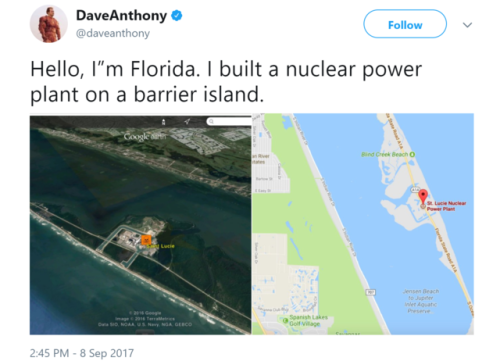themilitaryindustrialcomplex:that’s actually exactly where you want to keep a nuclear plant. When nu
themilitaryindustrialcomplex:that’s actually exactly where you want to keep a nuclear plant. When nuclear plants are built they are put by large bodies of water so that they have a constant water supply as well as a radiation sink should they catastrophically fail. the key to making meltdowns manageable is shielding and distance Distance is important because radiation obeys the inverse square law. That is, if you double the distance, you only get ¼ the radiation. If you were four feet from a radiation source that put you in a 600R/ hr field, but immediately jumped back to 8 feet away, you would only be in a 150R/hr. As you can see, the exposure drops off VERY fast with distance.Shielding matters because different particles (the “radioactive bits” that radiation describes) can’t penetrate certain things. alpha particles (the most numerous particles as well as the weakest) can’t penetrate more than a sheet of paper, beta particles cant penetrate more than a few mm of aluminum, but gamma rays (the powerful, deadly particles) need a lot of lead, though they’re half lives are short and they’re are very few gamma emitting particles. neutron radiation, the thing most people worry about, is easily contained by substances containing hydrogen (two metres of water will stop all but the most energetic neutrons).The ocean just happens to have the perfect combination of great distance and shielding, and areas of it that experience spills often only see their rads increase by a just few integers or decimals. The sun increases and decreases local rads more significantly than that. This is why places like Chernobyl are worse off than Three Mile Island, where almost all of the radiation dissipated into the sea. Hell, that’s why the immediate land around Fukashima is uninhabitable while it’s coast has practically normalized. -- source link
Tumblr Blog : berniesrevolution.tumblr.com
#nuclear power

